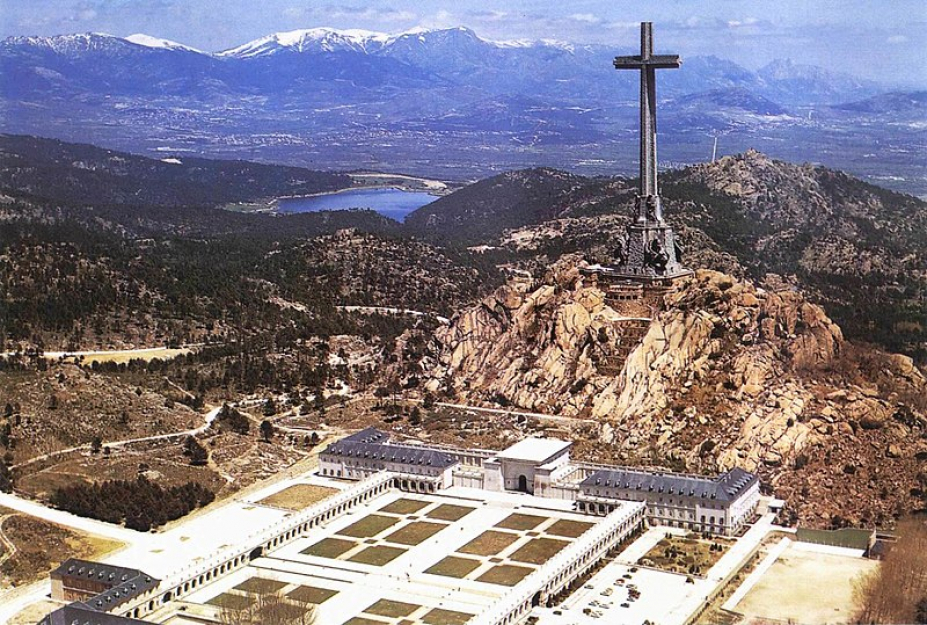The Valley of the Fallen Under Threat: Expulsion of Monks and Attack on Religious Heritage

The Valley of the Fallen, a Catholic monument of reconciliation built after the Spanish Civil War, is facing increasing political pressure from the Spanish government. Plans to evict the Benedictine monks, change the religious identity of the site and even remove the monumental cross raise serious concerns about religious freedom and historical revisionism.
The Valley of the Fallen, its monumental cross and the Benedictine community that inhabits it are under increasing political and social pressure that threatens their integrity and existence. The site was built during the dictatorship of Francisco Franco as a monument of national reconciliation after the Spanish Civil War. People from both sides of the war are buried in the valley, as "all are baptised", regardless of their ideology or political affiliation. This attitude makes it clear that the valley was not intended to be a "triumphal" monument to the Francoist side. Rather, it was to be a reminder of the war and the loss it caused on all sides in order to keep the peace in Spain.
However, the left-wing governments in Spain (from the Zapatero government to the current Sanchez government) want to change the valley to give it a civil and non-religious tone, eliminating all Catholic elements that are considered "typical of the Franco dictatorship".
The Benedictine monks, present in the valley since 1958, are currently threatened with expulsion by the Spanish government. The Ministry of Territorial Policy and Democratic Memory has announced plans to evict the 21 monks within a maximum of two years. This decision ignores the existing agreement between the Foundation of the Holy Cross of the Valley of the Fallen and the Benedictine Abbey of Silos, which establishes the presence of the monks for an indefinite period. As reported by OIDAC Europe, the intention to evict the Benedictine monks is an ongoing effort by some political agents.
The expulsion of the Benedictines would not only affect the religious community, but also cultural institutions of great value, such as the Escolanía de la Santa Cruz del Valle de los Caídos. Although there have been attempts to have the Escolanía declared an Asset of Cultural Interest (BIC), this protection would not guarantee the permanence of the monks.
The cross in the Valley of the Fallen, the largest cross in the world and a religious symbol of great importance, is also under threat. Organisations such as the Association for the Defence of the Valley of the Fallen (ADVC) have launched an appeal in defence of the cross, warning of plans to desacralise the basilica and the possible demolition of the cross.
The government's actions against the Valley of the Fallen and the wrong association of religious elements as "signs of the Franco regime" raise serious concerns about a radical secularism that aims to erase the country's religious identity and history. Minister Angel Victor Torres has declared that the identification of the state with a particular religious denomination 'has been replaced', reiterating the government's intention to evict the Benedictine monks and remove all religious elements from the site.
In response to these threats, campaigns have been launched in support of the Benedictine monks. The Catholic Petitions portal has launched an initiative calling on citizens to support the religious and protect their presence in the valley.
The situation in the Valley of the Fallen reflects a worrying attempt to rewrite history and marginalise the religious presence in a place of great spiritual and cultural importance. The expulsion of the Benedictine monks and the possible destruction of religious symbols such as the monumental cross would constitute a serious attack on religious freedom and Spain's cultural heritage. It is imperative that existing agreements are respected and that the integrity of the Valley of the Fallen as a place of worship, reconciliation and historical memory is protected.
Source: larazon.es, eldebate.com, eldebate.com, larazon.es
Image: Wikimedia Commons